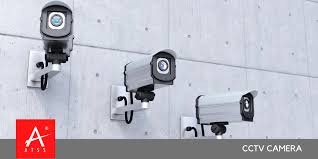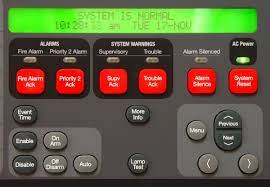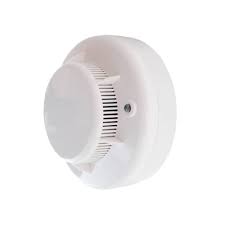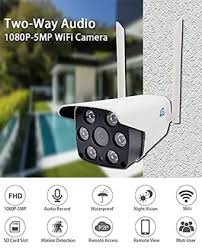CCTV Surveillance: Enhancing Security and Peace of Mind
In an increasingly interconnected world, ensuring the safety and security of our homes, businesses, and public spaces has become a top priority. One of the most effective tools in achieving this goal is Closed Circuit Television (CCTV) surveillance.
CCTV surveillance systems consist of cameras that capture video footage and transmit it to a closed network of monitors or recording devices. These systems have revolutionized the way we monitor and protect our surroundings, providing us with invaluable visual evidence in case of incidents or emergencies.
The benefits of CCTV surveillance are manifold. Firstly, it acts as a strong deterrent against criminal activities. The mere presence of cameras can discourage potential wrongdoers from committing crimes, as they know their actions are being recorded. This not only protects the premises but also instills a sense of safety among residents, employees, and visitors.
Moreover, CCTV surveillance provides real-time monitoring capabilities. With advanced technology, these systems allow for remote access to camera feeds through smartphones or computers. This means that users can keep an eye on their properties even when they are away, ensuring continuous vigilance and peace of mind.
In addition to prevention and monitoring, CCTV surveillance plays a crucial role in post-incident investigations. In case of thefts, vandalism, or other criminal activities, the recorded footage serves as valuable evidence for identifying perpetrators and aiding law enforcement agencies in their investigations. This helps increase the chances of apprehending culprits and bringing them to justice.
Furthermore, CCTV surveillance is not limited to crime prevention alone. It also serves as a valuable tool for enhancing safety in various environments. For instance, in traffic management systems, cameras strategically placed at intersections help monitor road conditions and detect traffic violations. This promotes smoother traffic flow and reduces accidents on busy roads.
In retail settings, CCTV surveillance helps prevent shoplifting and employee theft by acting as a constant monitoring mechanism. It ensures that customers and employees are aware that their actions are being recorded, discouraging any dishonest behavior.
It is important to note that the effectiveness of CCTV surveillance relies on the quality and placement of cameras. High-resolution cameras with wide coverage angles provide clear and detailed footage, making it easier to identify individuals and events. Additionally, proper placement of cameras in strategic locations ensures maximum coverage and minimizes blind spots.
While CCTV surveillance offers numerous benefits, it is essential to strike a balance between security and privacy. Clear communication and adherence to legal regulations regarding camera usage are crucial to ensure that the rights and privacy of individuals are respected.
In conclusion, CCTV surveillance has become an integral part of modern security systems. Its ability to deter crimes, monitor activities in real-time, provide evidence for investigations, and enhance safety makes it an invaluable tool for both residential and commercial settings. By deploying CCTV surveillance systems, we can create safer environments, protect our assets, and enjoy a greater sense of security in our daily lives.
5 Essential Tips for Effective CCTV Surveillance
- Make sure the CCTV system is installed in a secure location and is not easily accessible to the public.
- Use high-resolution cameras to ensure that all details are captured clearly.
- Ensure that your CCTV system is regularly maintained and monitored by a professional security company or personnel.
- Establish clear policies and procedures for using the CCTV system, including who has access to view footage, when it can be viewed, and how long recordings will be stored for.
- Ensure that your CCTV surveillance system complies with local laws and regulations regarding data protection and privacy rights of individuals being monitored on camera.
Make sure the CCTV system is installed in a secure location and is not easily accessible to the public.
Ensuring the Security of Your CCTV System: The Importance of Proper Installation
When it comes to CCTV surveillance, the effectiveness of the system depends not only on the quality of cameras but also on their proper installation. One crucial tip to keep in mind is to make sure that your CCTV system is installed in a secure location and is not easily accessible to the public.
Placing your CCTV cameras in a secure location serves two important purposes. Firstly, it prevents unauthorized tampering or vandalism. By installing cameras out of reach or in protected enclosures, you minimize the risk of them being damaged or disabled by mischievous individuals. This ensures that your surveillance system remains fully functional and operational at all times, providing you with uninterrupted security coverage.
Secondly, positioning your CCTV system away from public access helps protect the privacy of individuals within its range. It is important to strike a balance between security and privacy concerns. By placing cameras strategically, you can capture necessary footage without intruding on private spaces such as residential areas or sensitive work environments.
To ensure optimal security and privacy protection, consider these installation guidelines:
- Mount cameras at an elevated height: Positioning cameras at an elevated height makes them less susceptible to tampering or vandalism. It also provides a wider field of view, capturing more detailed footage.
- Use protective enclosures: Install cameras within protective enclosures that are resistant to weather conditions and physical damage. These enclosures should be designed in a way that prevents easy access by unauthorized individuals.
- Conceal wiring: Concealing wiring not only enhances the aesthetics but also makes it harder for potential intruders to disable or tamper with the system.
- Secure control equipment: Ensure that control equipment such as DVRs (Digital Video Recorders) or NVRs (Network Video Recorders) are stored in secure locations with restricted access.
- Regularly check for blind spots: Conduct periodic checks to identify any blind spots in the camera coverage. Adjust camera angles or add additional cameras as required to ensure comprehensive surveillance.
By following these installation guidelines, you can enhance the security and integrity of your CCTV system. It is always advisable to consult with professional installers who have expertise in designing and setting up CCTV systems to ensure the best results.
Remember, proper installation not only protects your investment but also ensures that your CCTV system functions optimally, providing you with reliable surveillance and peace of mind.
Use high-resolution cameras to ensure that all details are captured clearly.
When it comes to CCTV surveillance, one of the key factors that greatly influences its effectiveness is the quality of the cameras used. In order to ensure that all details are captured clearly, it is crucial to opt for high-resolution cameras.
High-resolution cameras are designed to provide clear and sharp images, allowing for better identification of individuals and events. These cameras capture a higher number of pixels per frame, resulting in enhanced clarity and finer details in the footage.
By using high-resolution cameras, you can significantly improve the accuracy and reliability of your CCTV surveillance system. Whether it’s monitoring a busy street, securing a commercial establishment, or safeguarding your home, these cameras ensure that no important details go unnoticed.
The benefits of high-resolution cameras extend beyond just capturing clear images. They also enable better analysis of recorded footage. With clearer visuals, investigators can zoom in on specific areas or objects without losing image quality. This aids in identifying crucial evidence and gathering information for investigations.
Moreover, high-resolution cameras are particularly useful in scenarios where facial recognition or license plate identification is necessary. The increased level of detail ensures that important features are captured accurately, enabling easier identification and tracking if required.
When selecting high-resolution cameras for your CCTV system, consider factors such as camera resolution (measured in megapixels), lens quality, low-light capabilities, and storage requirements. It is essential to choose cameras that match your specific surveillance needs and provide optimal performance in various lighting conditions.
In conclusion, using high-resolution cameras is a valuable tip for enhancing the effectiveness of your CCTV surveillance system. By investing in these advanced camera technologies, you can ensure that all details are captured clearly, improving identification capabilities and maximizing the overall security provided by your surveillance setup.
Ensure that your CCTV system is regularly maintained and monitored by a professional security company or personnel.
Ensuring Effective CCTV Surveillance: Regular Maintenance and Monitoring
Investing in a CCTV surveillance system is a crucial step towards enhancing security and protecting your premises. However, simply installing cameras is not enough. To maximize the effectiveness of your CCTV system, it is essential to prioritize regular maintenance and monitoring by a professional security company or personnel.
Regular maintenance plays a vital role in keeping your CCTV system in optimal working condition. Over time, cameras may accumulate dust or debris, affecting the quality of the recorded footage. By scheduling routine maintenance checks, professionals can clean and inspect the cameras to ensure clear and reliable video capture.
In addition to physical maintenance, software updates are equally important. Technology advances rapidly, and manufacturers regularly release firmware updates to address vulnerabilities or enhance features. Professional security companies stay up-to-date with these updates and ensure that your CCTV system is running on the latest software version, providing you with improved performance and enhanced security.
Monitoring your CCTV system is equally crucial. While remote access allows you to view camera feeds from anywhere, having professionals monitor the system adds an extra layer of protection. Trained personnel can actively monitor camera feeds in real-time, detect any suspicious activities or breaches, and take immediate action if necessary.
Professional monitoring also ensures that any technical issues are promptly addressed. In case of camera malfunctions or network disruptions, security personnel can quickly identify and resolve the problem, minimizing downtime and ensuring uninterrupted surveillance coverage.
Moreover, professional security companies often offer additional services such as video analytics. These advanced tools use artificial intelligence algorithms to analyze camera footage for specific events or behaviors. By leveraging video analytics technology, security personnel can receive alerts for unusual activities like unauthorized access attempts or loitering in restricted areas.
By entrusting the maintenance and monitoring of your CCTV system to professionals, you can rest assured that it remains reliable and effective in safeguarding your premises. Their expertise ensures that any potential issues are proactively addressed before they compromise the integrity of your security system.
In conclusion, regular maintenance and professional monitoring are essential to ensure the effectiveness of your CCTV surveillance system. By partnering with a reputable security company or personnel, you can benefit from routine maintenance checks, software updates, real-time monitoring, and additional services like video analytics. This proactive approach not only enhances the performance of your CCTV system but also provides you with peace of mind knowing that your security is in capable hands.
Establish clear policies and procedures for using the CCTV system, including who has access to view footage, when it can be viewed, and how long recordings will be stored for.
Establishing Clear Policies and Procedures for CCTV Surveillance
When implementing a CCTV surveillance system, it is crucial to establish clear policies and procedures to ensure its effective and responsible use. These guidelines help maintain the integrity of the system, protect privacy rights, and maximize its security benefits.
One important aspect of these policies is determining who has access to view the CCTV footage. Access should be restricted to authorized personnel only, such as security staff or designated individuals responsible for monitoring and investigating incidents. By limiting access, you can prevent unauthorized viewing or misuse of the footage, ensuring that it is used solely for its intended purpose.
Defining when the CCTV footage can be viewed is equally important. Establish specific circumstances or triggers that warrant reviewing the recordings. For example, footage may be accessed in response to reported incidents, suspicious activities, or as part of routine security checks. By clearly outlining when viewing is permitted, you maintain transparency and prevent any potential abuse of the system.
Additionally, it is essential to determine how long recordings will be stored for. This duration should align with legal requirements and your organization’s needs. While some jurisdictions may have specific regulations on data retention periods, you can also consider factors such as the nature of your business or any potential legal proceedings that may require access to older footage. By establishing a clear storage policy, you ensure compliance with regulations while optimizing storage space.
Communicating these policies and procedures is vital to ensure everyone involved understands their roles and responsibilities. Provide training sessions or guidelines that outline the proper use of the CCTV system and emphasize the importance of adhering to established protocols. This helps create a culture of accountability and responsibility among users.
Regularly reviewing and updating your policies is essential as technology evolves and new challenges arise. Stay informed about any changes in legislation or best practices related to CCTV surveillance to ensure ongoing compliance with relevant standards.
In conclusion, establishing clear policies and procedures for using a CCTV surveillance system is crucial for its effective implementation. By defining access privileges, determining when footage can be viewed, and establishing storage durations, you can maintain security, protect privacy rights, and ensure responsible use. Regular communication and updates to these policies will help your organization stay ahead in the ever-evolving landscape of CCTV surveillance.
Ensure that your CCTV surveillance system complies with local laws and regulations regarding data protection and privacy rights of individuals being monitored on camera.
Ensuring Compliance: Protecting Privacy in CCTV Surveillance
When it comes to implementing CCTV surveillance systems, it is crucial to prioritize the protection of privacy rights and adhere to local laws and regulations. While these systems are designed to enhance security, they must not infringe upon the privacy of individuals being monitored on camera.
To ensure compliance, it is important to familiarize oneself with the specific data protection and privacy laws applicable in your region. These laws vary from country to country and even within different states or provinces. Understanding these regulations will help you design and operate your CCTV surveillance system in a manner that respects the rights of individuals.
One key aspect of compliance is obtaining informed consent from individuals who may be captured by the cameras. This typically involves displaying clear signage indicating that CCTV surveillance is in operation. By doing so, you inform people that their actions may be recorded while they are within the monitored area. This transparency allows individuals to make an informed decision about entering or remaining in the premises.
Additionally, it is important to ensure that recorded footage is stored securely and accessed only by authorized personnel for legitimate purposes. Implementing strict access controls and encryption measures can help protect against unauthorized access or data breaches.
Regularly reviewing and deleting unnecessary footage is another important step towards compliance. Retaining recorded data for longer than necessary may increase the risk of misuse or accidental disclosure. Establishing a clear retention policy will help ensure that footage is retained only for as long as required by law or business needs.
In some cases, it might be necessary to blur or obscure certain areas or individuals captured by CCTV cameras to further protect privacy rights. This can be particularly relevant in public spaces where capturing sensitive information like faces, license plates, or personal identification details may not be justified.
By prioritizing compliance with local laws and regulations regarding data protection and privacy, you can strike a balance between enhancing security through CCTV surveillance while respecting the fundamental rights of individuals being monitored on camera.
Remember, compliance is not a one-time task but an ongoing commitment. Stay updated with any changes in legislation and regularly assess and adjust your CCTV surveillance practices to ensure continued compliance. By doing so, you can create a safe and secure environment while upholding the privacy rights of those under surveillance.




